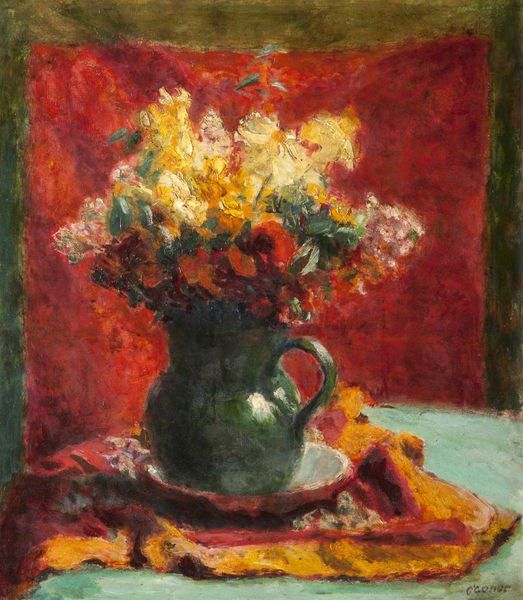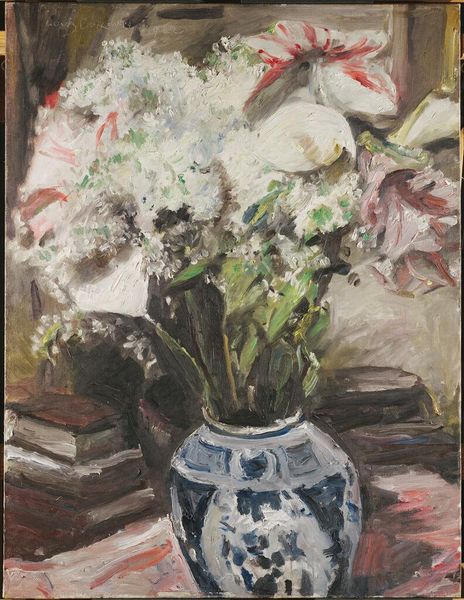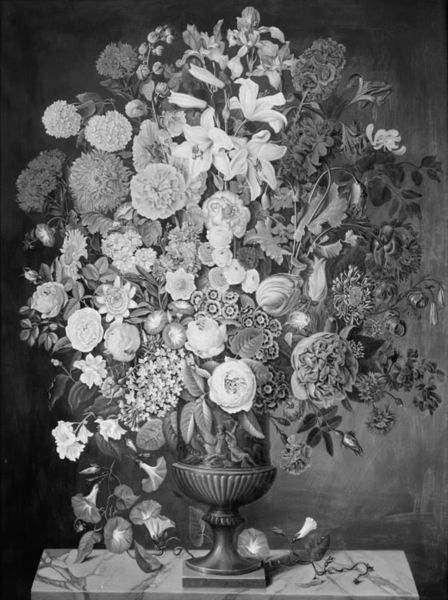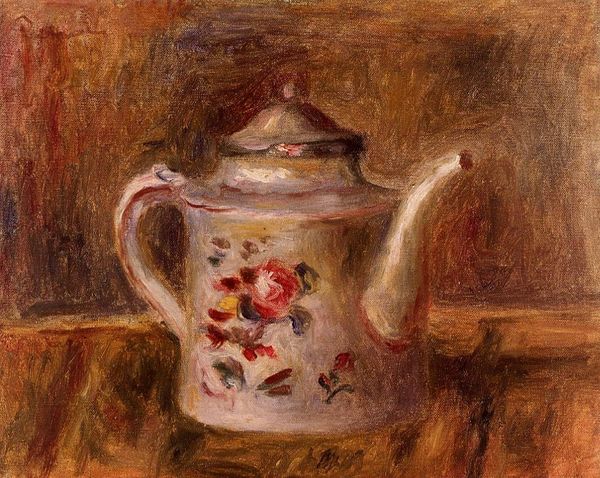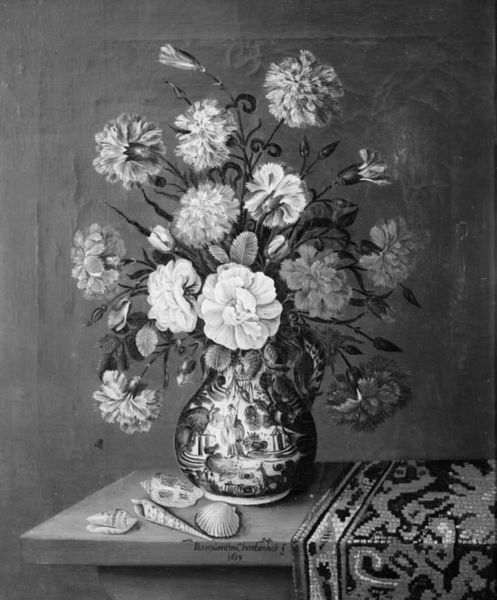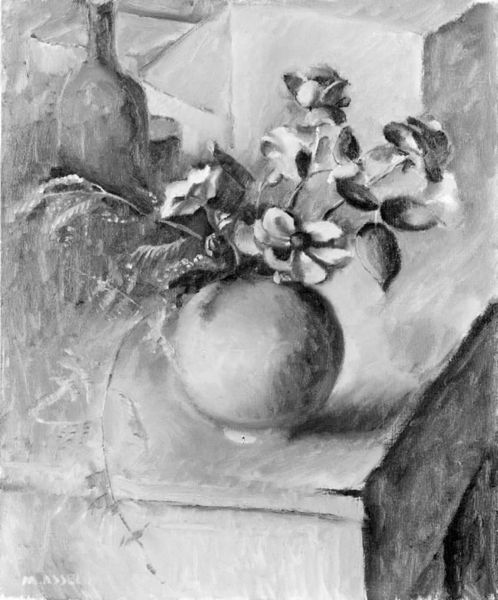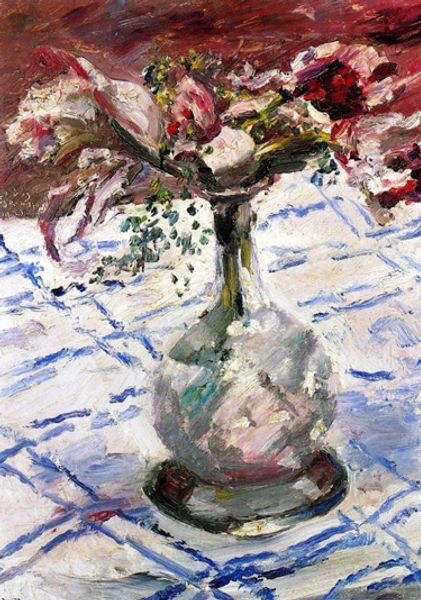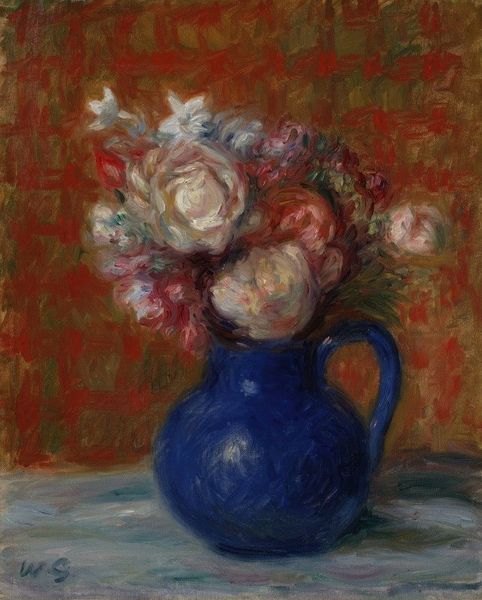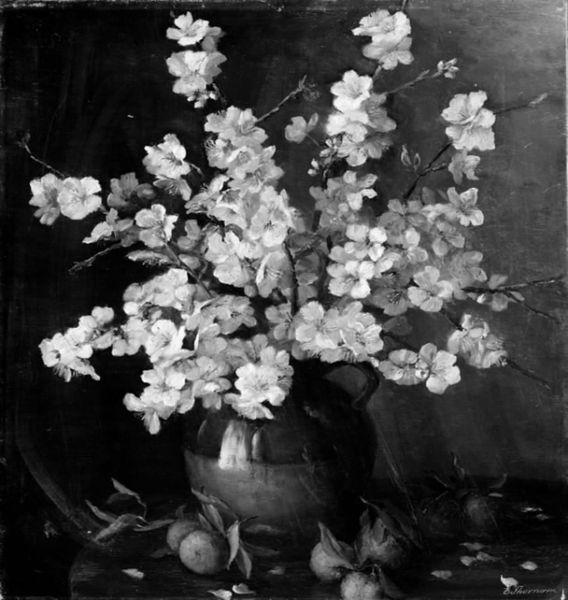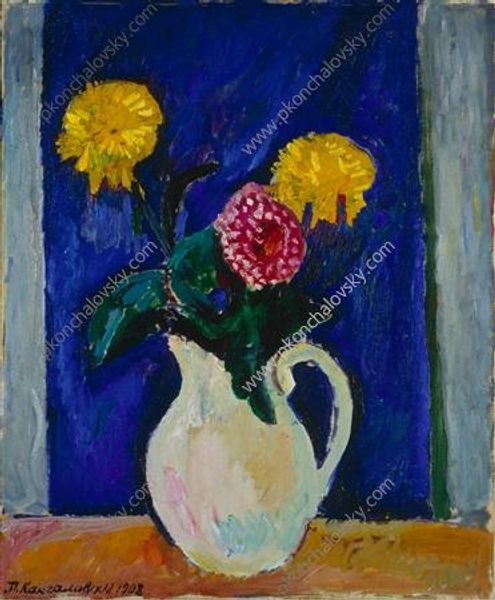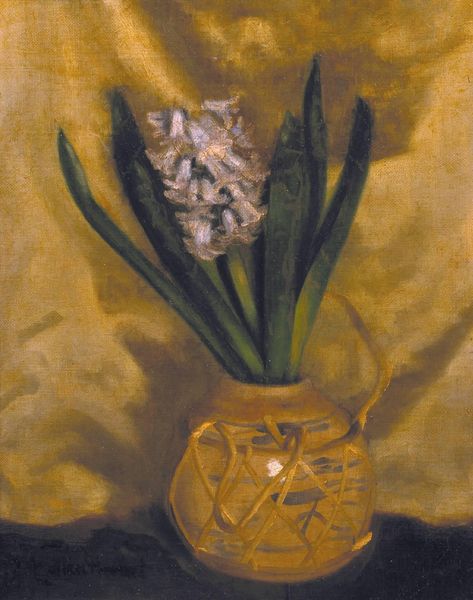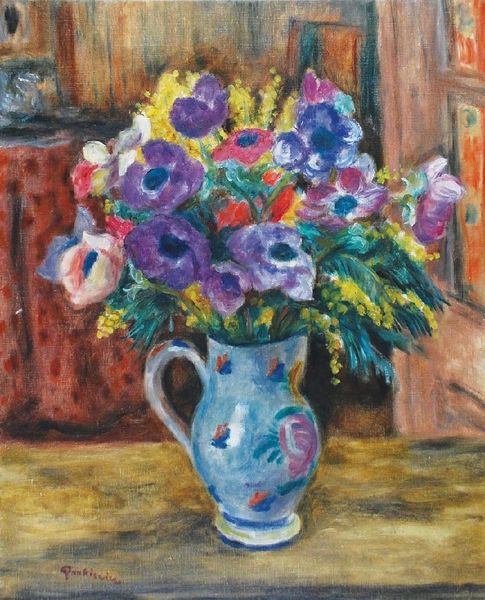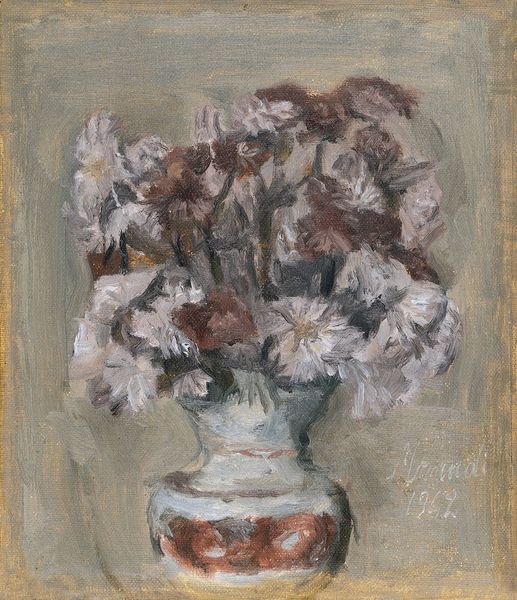
painting, oil-paint, impasto
#
painting
#
oil-paint
#
impasto
#
modernism
Dimensions: 70 cm (height) x 47.5 cm (width) (Netto)
Curator: Welcome. We’re standing before Karl Schou’s “Blomster i en vase,” or “Flowers in a Vase,” an oil painting dating from 1926 and held here at the SMK. The use of impasto is striking. What's your immediate response? Editor: Stark, even somber, despite being a floral still life. It feels muted and contemplative. The shades of gray offer such a limited range. It begs the question of why. Curator: The gray palette does affect our reading, doesn’t it? Traditionally, flowers signify transience, beauty that fades. But here, drained of vibrant color, their symbolic resonance feels different. Consider the vase: in the vessel, we find a symbolic container. What history might these flowers signify? Is there a deeper emotional container we should also consider? Editor: Given the period, painted post-World War One, and employing a modernist idiom, it almost reads like a muted memorial, doesn't it? Perhaps a reflection on loss, resilience, and how even beauty can carry the weight of historical trauma. Was this a popular style for reflecting on such heavy times? Curator: During the interwar period, artists sought new visual vocabularies to express lived experience. This painting could speak to a broader disillusionment following the war, where conventional symbols of beauty seemed inadequate to address the collective trauma. But you see a little vessel there on the left, next to the larger pitcher: a very potent and curious additional symbol. Editor: Ah, I almost overlooked it! What about it? Curator: Doesn’t that cup suggest vulnerability? Think of the cup in dreams or in Tarot—always fragile and full of possibility and potential. Editor: Perhaps Schou subtly alludes to a possibility of renewal or hope within devastation. This wasn't simply a depiction of a bouquet but rather a considered reflection on memory and potential healing. What looks like impasto, is there evidence the paint was layered over, hiding, perhaps other iterations or approaches that were abandoned? Curator: Absolutely. It makes one think about layers of memory—what’s covered up, or what the painter is trying to highlight or let go of. What do you leave the audience with? Editor: This has prompted a reconsideration of how floral arrangements signify not just fleeting beauty but complex narratives intertwined with societal contexts and deeply personal grief. It invites us to ponder what flowers themselves can and have come to mean. Curator: A thoughtful exploration of beauty and symbolic weight.
Comments
No comments
Be the first to comment and join the conversation on the ultimate creative platform.
